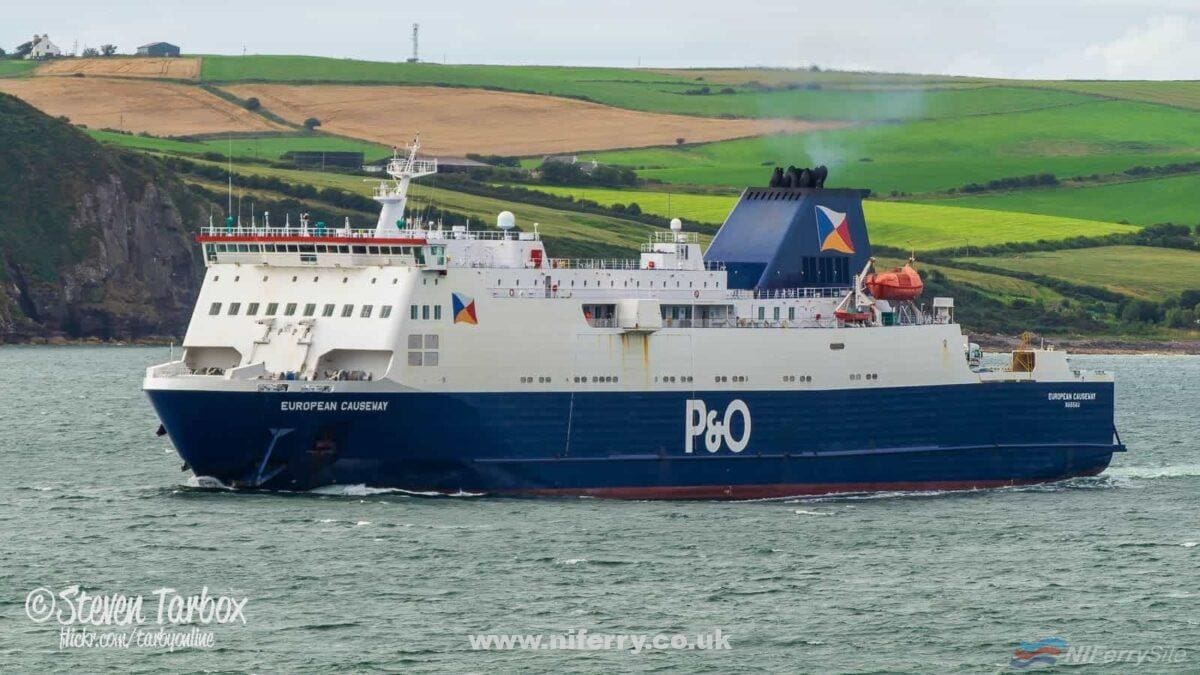Overview of the European Causeway and European Highlander
EUROPEAN CAUSEWAY and EUROPEAN HIGHLANDER are the first and third of a series of three ferries built for P&O Irish Sea (now part of P&O Ferries) The second of these ships, EUROPEAN AMBASSADOR, later became STENA NORDICA. All three ships were designed by Danish naval architects Knud E Hansen and built by Mitsubishi Heavy Industries (MHI) at Shimonoseki in Southern Japan,
EUROPEAN CAUSEWAY and EUROPEAN HIGHLANDER operate the Larne to Cairnryan service together for P&O Ferries and are the first purpose-built vessels to operate on the service. Previously the route was served solely by vessels which had been cascaded from other routes.
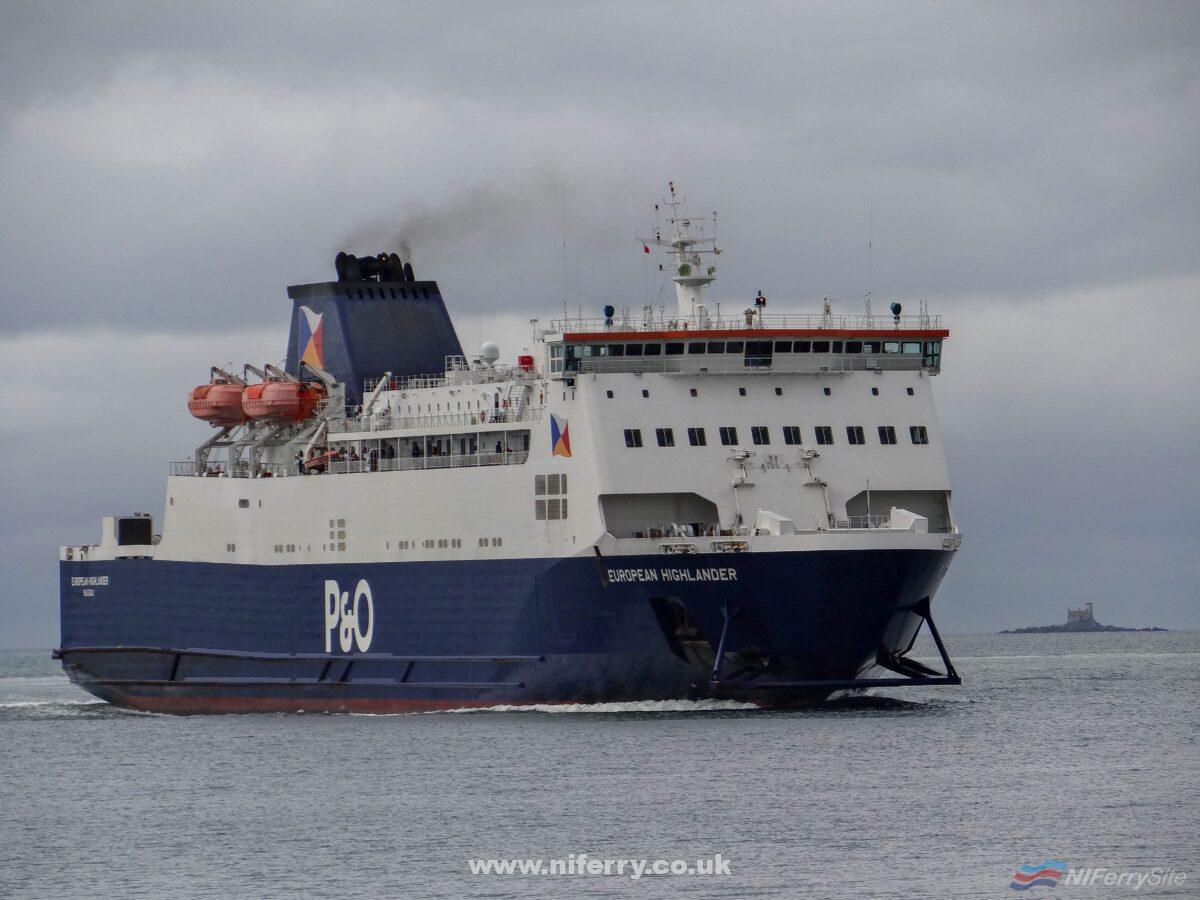
As EUROPEAN HIGHLANDER and EUROPEAN CAUSEWAY were designed specifically to operate the Larne to Cairnryan link, their facilities reflect the short 105 minute crossing time they were designed for. At the time of writing, the advertised crossing time is now slightly longer at 120 minutes.
EUROPEAN CAUSEWAY replaced PRIDE OF RATHLIN as the conventional passenger ship on the route during August 2000. She was joined by EUROPEAN HIGHLANDER in July 2002, which replaced the veteran European-class freighters EUROPEAN ENDEAVOUR and EUROPEAN PATHFINDER.

The “other” part-sister
The second (and largest) of the series of three vessels operated for Stena Line between Dublin and Holyhead until the start of 2015 as the STENA NORDICA, having previously operated the unsuccessful Dublin – Mostyn route for P&O until 2004 as EUROPEAN AMBASSADOR as well as Dublin-Liverpool and Rosslare to Cherbourg before a spell with Stena Line in Scandinavia. At the end of March 2015 having been replaced at Dublin by STENA SUPERFAST X, STENA NORDICA began a charter for DFDS on the English Channel, and so again became the only vessel of the series not to operate on Irish Sea services. She is currently back with Stena operating in the Baltic Sea, though often returns to the Irish Sea as an overhaul relief vessel.
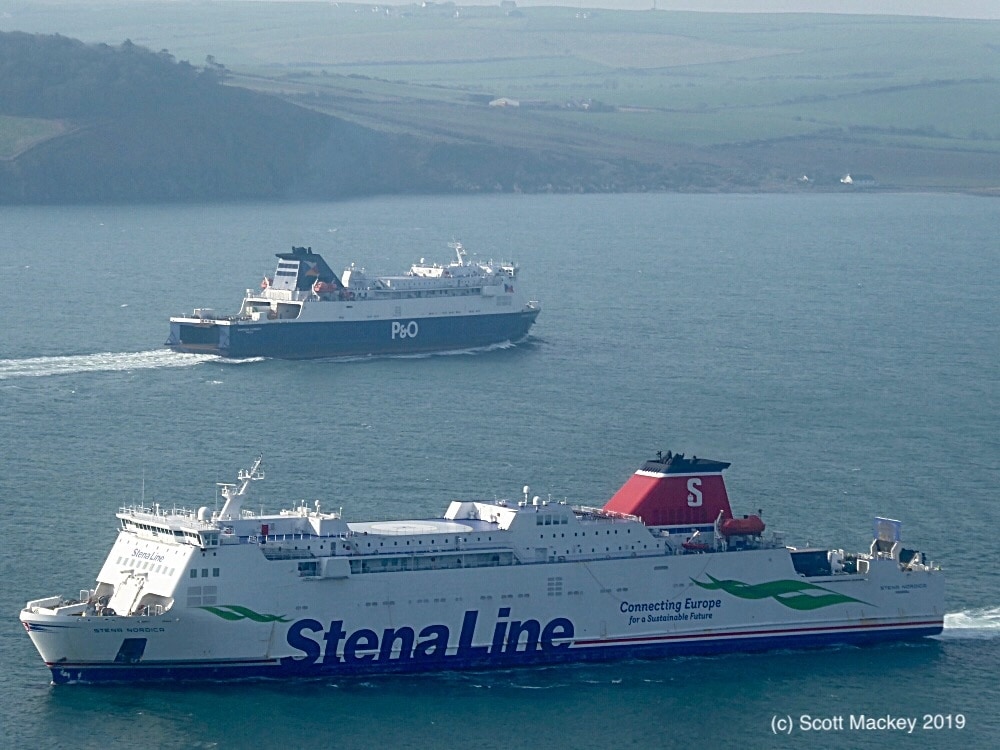
Differences
There are some differences between the two Larne to Cairnryan conventional vessels, though the passenger experience is virtually identical. EUROPEAN HIGHLANDER was completed 2 years after EUROPEAN CAUSEWAY, having been ordered 3 months after the earlier vessel was introduced. As a result, the opportunity was taken to make some tweaks to the design. This included extending the overall length of the vessel and making some revisions to the layout of the passenger accommodation. Perhaps most significantly from a passenger perspective, a second lift was added to EUROPEAN HIGHLANDER.
From the outside EUROPEAN HIGHLANDER is slightly longer and has an extra lifeboat on each side, making it easy to tell the two vessels apart. This additional lifeboat either side replaces the MES system fitted to EUROPEAN CAUSEWAY.
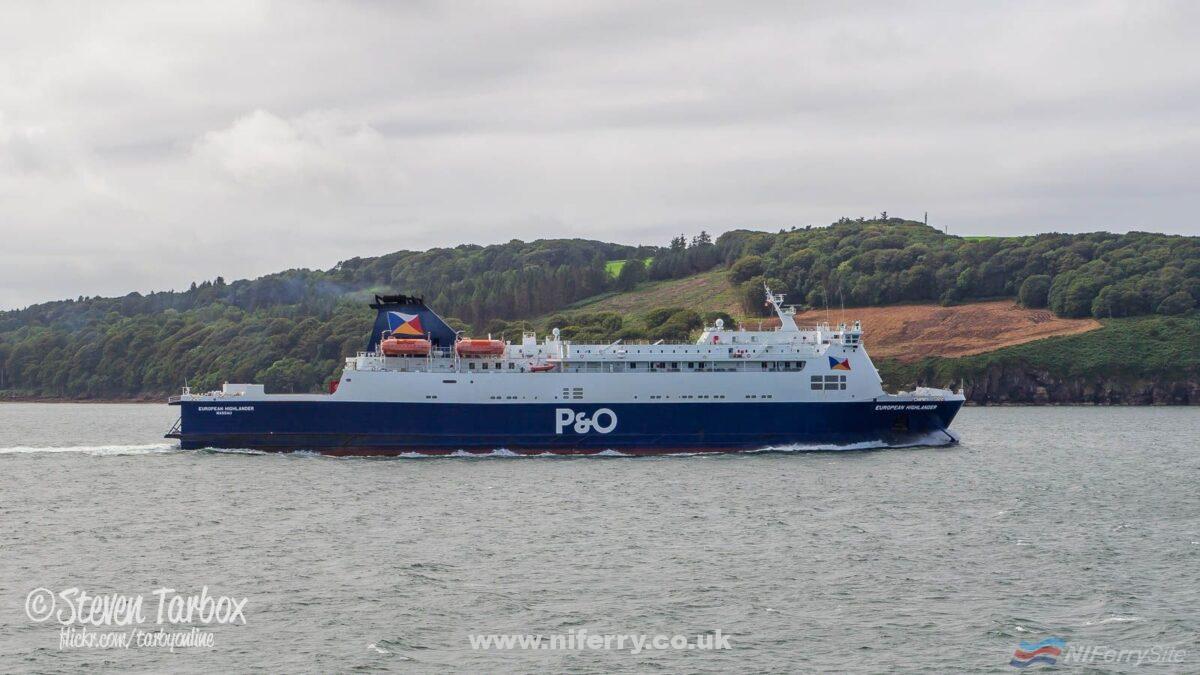
Layout
Despite the additional length of EUROPEAN HIGHLANDER, the official passenger and vehicle capacity for both vessels is exactly the same. Vehicles are accommodated over 3 decks (Decks 1, 2 and 3) with 2 of those decks (2 and 3) directly accessible from the double-decked link spans at Larne and Cairnryan. Vehicle access between decks is possible via 1 x 50m long hoistable ramp. The lower hold (deck 1) is accessed via a single fixed ramp. This is covered by a flap when not in use. Of note is the fact that the access equipment on these Japanese-built vessels was provided by Nagasaki-headquartered Tsuji Heavy Industries, a rarity on European ferries.
All passenger facilities are located on deck 4. Both vessels were refurbished by Blu Marine whilst dry-docked at Cammell-Laird Birkenhead during 2017. These refurbishments involved installing a new Food Court, replacing and reupholstering furniture, and the replacement of the flooring in the passenger corridors.
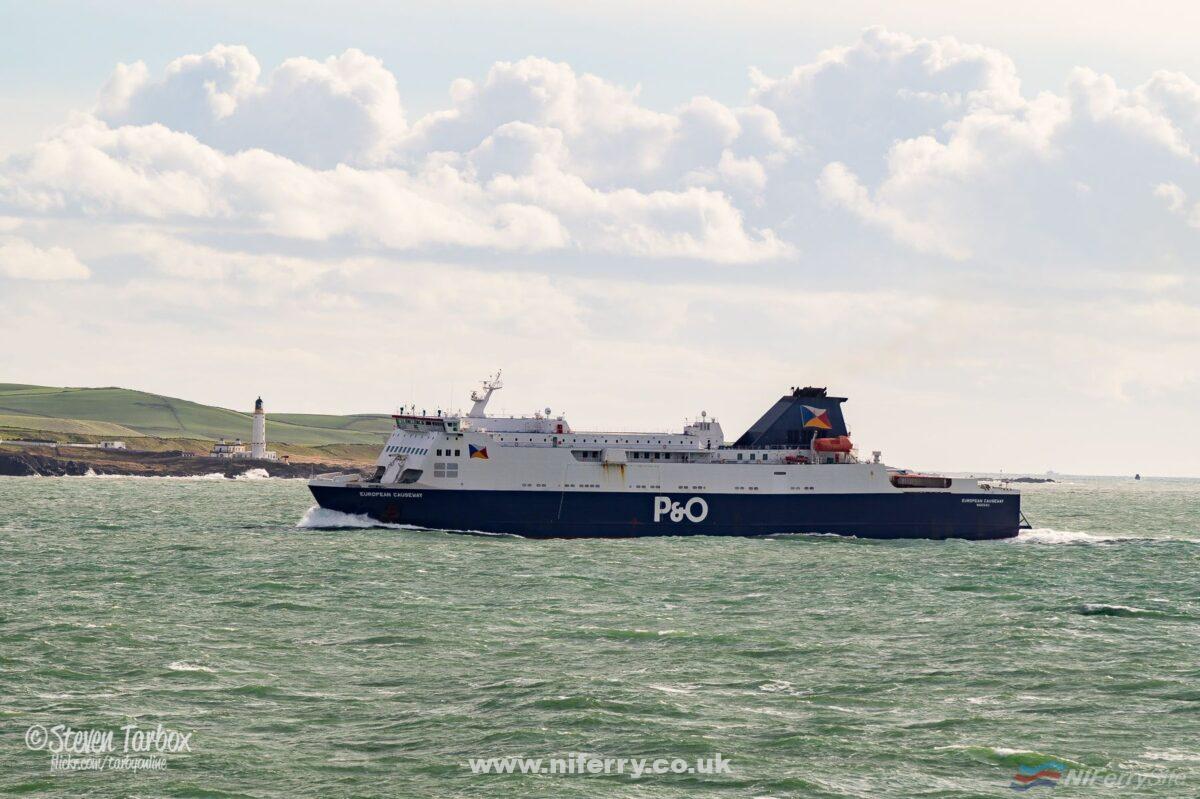
During summer 2019, both vessels had their Freight Drivers Lounge refurbished. Additional seating was also fitted to the forward bars of both ships, with the aim of easing congestion and improving passenger comfort, particularly at peak times.
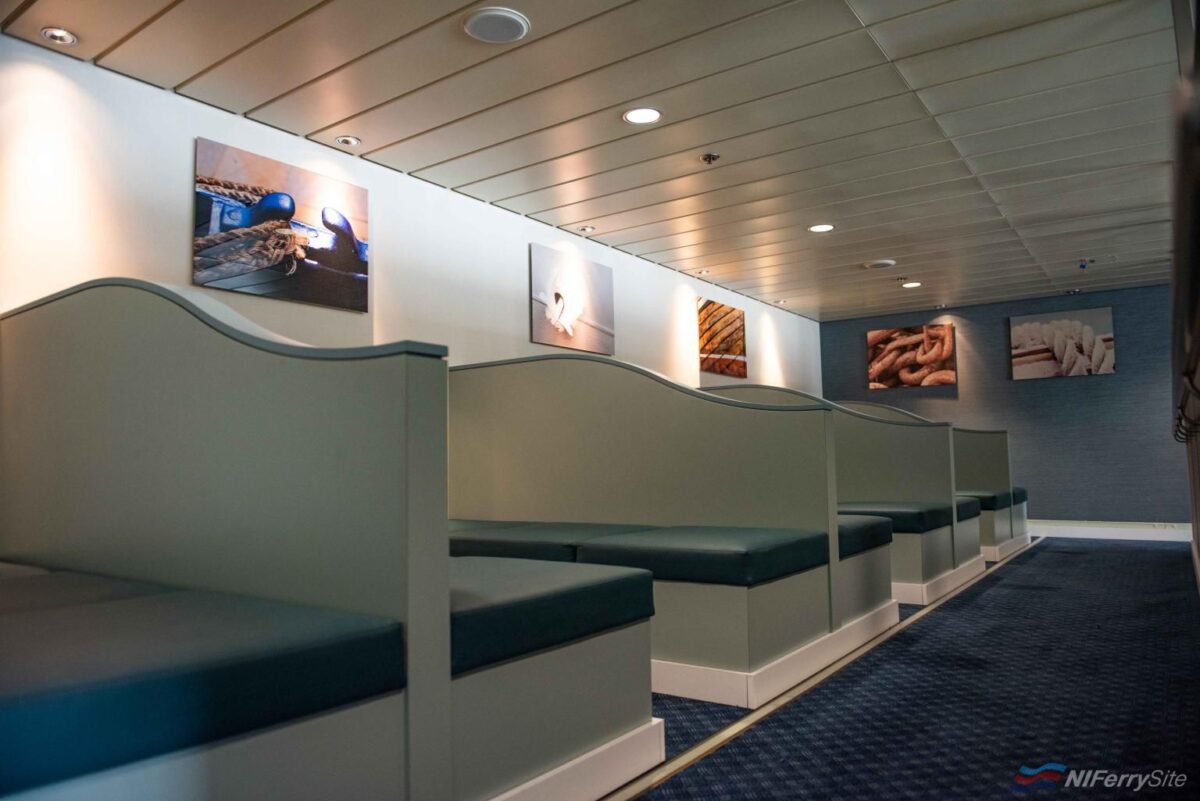
During September 2022, P&O Ferries announced that it intended to add dog-friendly lounges to EUROPEAN CAUSEWAY and EUROPEAN HIGHLANDER, though no firm date was announced for the move. The announcement followed rival Stena Line changing their policy to ban dogs from all passenger areas following a number of incidents.
Notable incidents
- EUROPEAN CAUSEWAY experienced a total loss of engine power while approaching her berth at Larne on August 13 2002. The quick actions of the crew averted the vessel grounding by lowering her anchors, but a large yacht was not so lucky and experienced some slight damage having been clipped by the vessel. By the time the vessel was brought to a halt engine power had already been restored and there were no injuries to any passengers or crew as a result of the incident.
- EUROPEAN HIGHLANDER was blown aground on the morning of Saturday January 8th 2005 while attempting to berth at Cairnryan at around 7am in what were described in the media as hurricane force winds. She was pulled from the shingle beach just south of the port the following morning at high tide at around 11am by two tugs. After sailing for Larne to load spare parts that evening she sailed for A&P Birkenhead for a full hull examination the following day. She was back in service on January 12th.
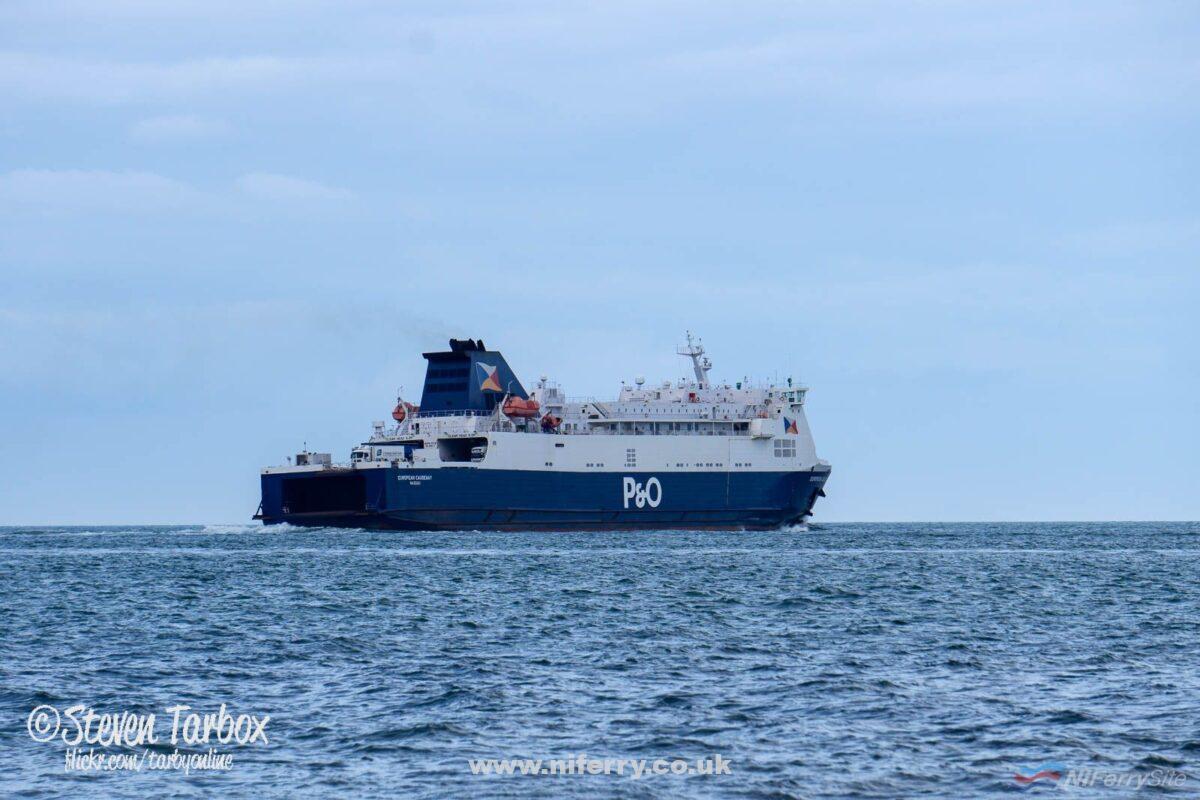
- On December 18th 2018 EUROPEAN CAUSEWAY hit national headlines after several vehicles tipped over during stormy weather during
a sailing to Cairnryan, damaging other vehicles on both of her vehicle decks in the process and triggering an emergency services response. The vessel was back in service less than 24 hours later,however . The MAIB later released a special safety bulletin regarding the incident ahead of the conclusion of the full investigation as at least six freight drivers had remained in their vehicles during the sailing, despite this being against international regulations and ignoring the instructions of the crew. - On March 31st 2019, there was an engine room fire onboard EUROPEAN CAUSEWAY while alongside at Larne. While three fire appliances were deployed to assist, the crew managed to extinguish the fire using the vessels own fire suppression system with no injuries reported.
- A separate loss of power incident occurred on 26 April 2022, also while the EUROPEAN CAUSEWAY was approaching Larne.
Deck plan
Click on a deck plan below to enlarge it.
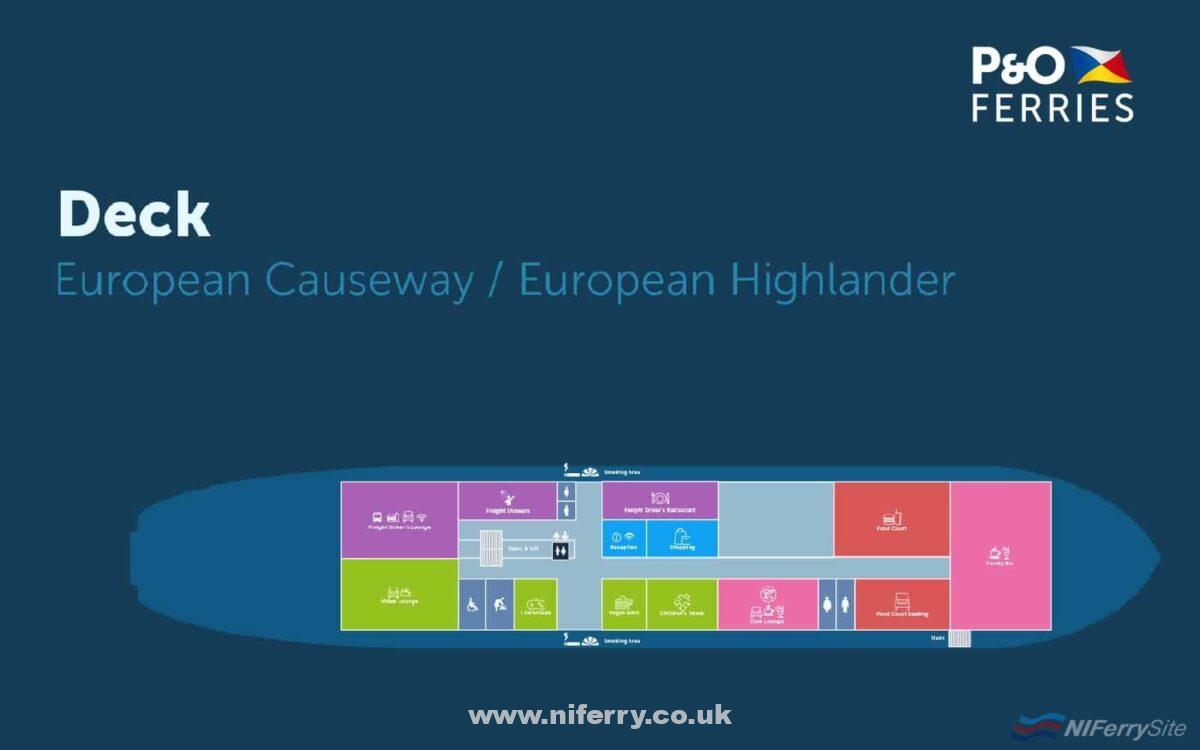
Technical Data


|
| EUROPEAN CAUSEWAY | EUROPEAN HIGHLANDER (if different) |
|---|---|---|
| IMO Number | 9208394 | 9244116 |
| Classification | Lloyds Register of Shipping | |
| Design | Knud E Hansen A/S, Copenhagen, Denmark | |
| Interior Design (as built) | Dugdale Management and Design, Ipswich, England | Dugdale Management and Design, Ipswich, England |
| Interior Architect | Nagasaki Senpaku | |
| Technical consultant | Three Quays Marine Services, London, England (Now BCTQ) | |
| Building Yard | Mitsubishi Heavy Industries (MHI), Shimonoseki, Japan | |
| Hull Number | 1065 | 1069 |
| Laid down | 12/10/2001 | |
| Launched | 20/03/2000 | 18/01/2002 |
| Year Completed | 2000 | 2002 |
| Construction Cost | £33m | £36m |
| In service | 14th August 2000 (replacing Pride of Rathlin) | 3rd July 2002 (Replacing European Endeavour and European Pathfinder) |
| Call sign | C6RG7 | C6SN6 |
| Length overall | 159.5m | 162.7m |
| Beam | 25.7m | 25.7m |
| Draft | 5.5m | 5.5m |
| Gross Tonnage | 20,646 | 21,118 |
| Machinery |
Main Engines : 4 x Wärtsilä 12V38 (Max 7.92kW each @600 rpm, NOR 6,732kW) V12 marine diesel engines Auxiliary Engines: 2 x Daihatsu 6DK-28 (1,900kW each @750 rpm) Bow Thrusters: 2 x Kawasaki (1.260kW each) Engine power is delivered to 2 x 4.25m KaMeWa propellers driven at 182 rpm Sperry Marine Gyrofin® stabilizers Litton Vision 2100 integrated bridge system Interswitched Decca BridgeMaster E 340 ARPA radars and 250 docking radar (See more at: http://www.sperrymarine.com/news/litton-marine-systems-supplies-electronics-new-po-irish-seas-ro-ro-ferry/) | |
| Power(Max/Pme @ 75%) | 31680kW/23760kW | |
| Operational speed (designed/in service) | 22.7/18 Knots
24.95 knots achieved in trials | 22.5/18 Knots |
| Capacity | 410 passengers 1750 lane metres of freight -107 trailers, 84 trucks, or 315 cars or a combination of all three | 410 passengers 1825 lane metres of freight -107 trailers, 84 trucks, or 315 cars or a combination of all three |
| Crew | Approx. 55 | Approx. 57 |
| Onboard Facilities in use (Following May 2013 refits) |
|
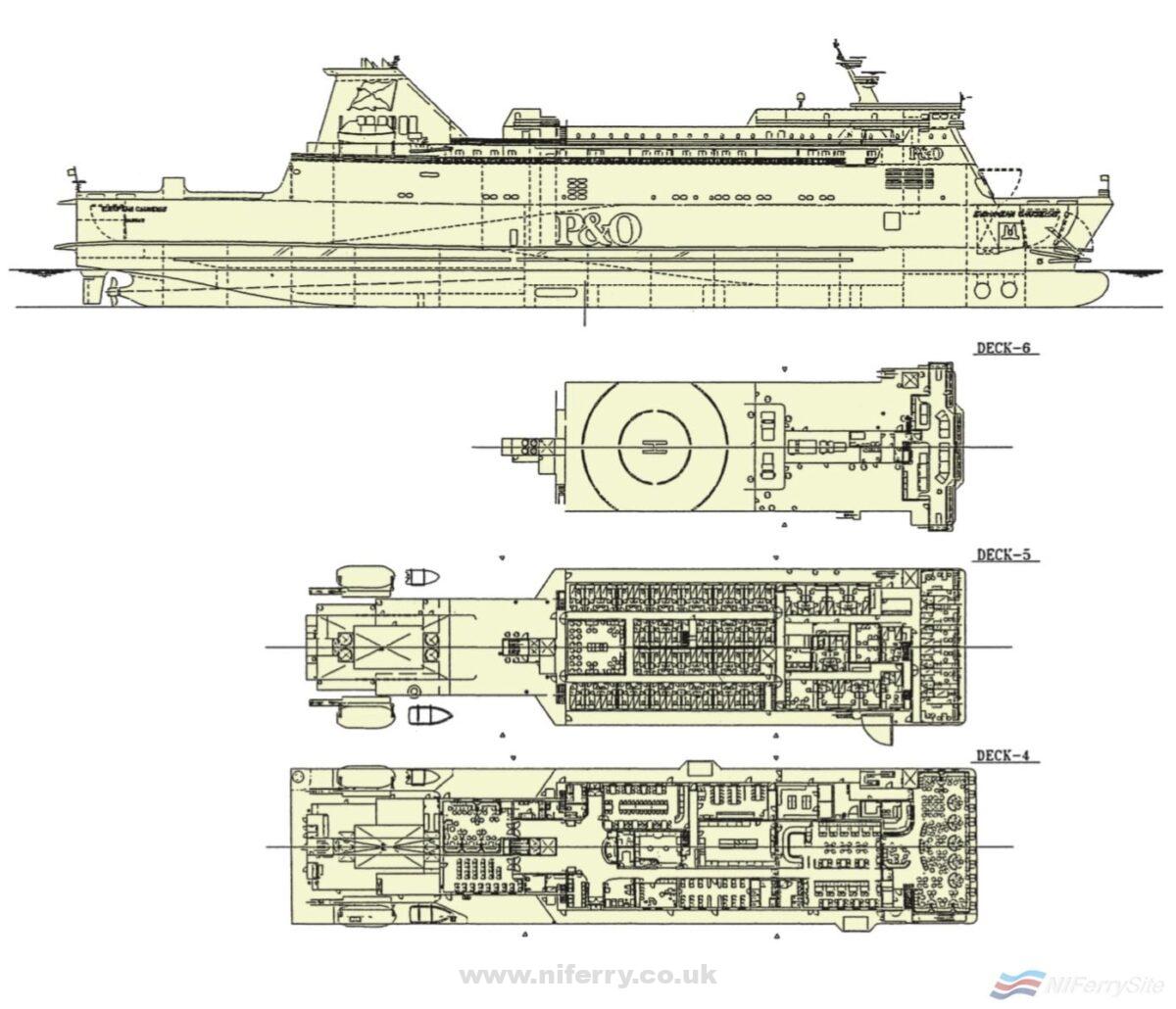
Photo Gallery
European Causeway Gallery
[foogallery id=”11347″]
European Highlander Gallery
[foogallery id=”18865″]
Original Article: 20.02.14
Last Updated: 29.04.19
